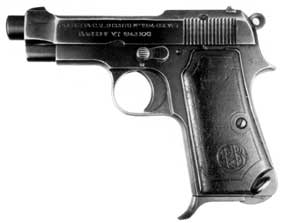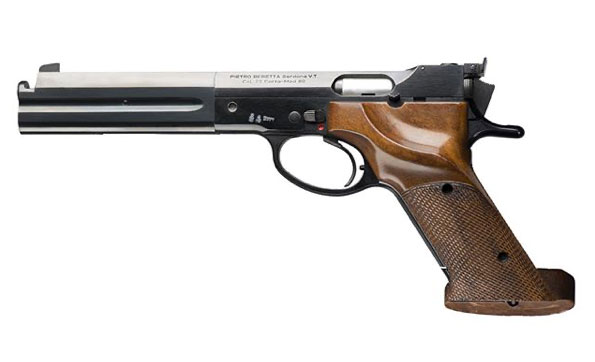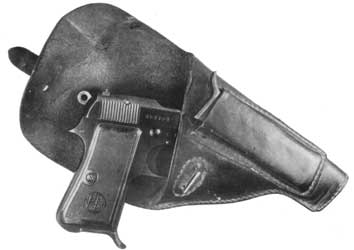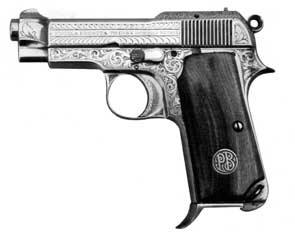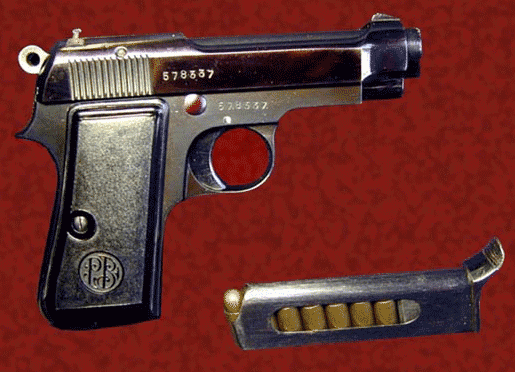 |
|
t has sharp edges and flat shadow-line surfaces, with a splendid finish for a military weapon.
The weapon belonged to my uncle Aurelio, a general in the Carabinieri. He was once Deputy Commander of the entire force and Commander of the Pastrengo Division during the 1960s. Uncle Aurelio was a towering figure, standing over six feet tall. He had served as a lieutenant in the Grenadiers of Sardinia during the First World War, earning several decorations, whose colorful ribbons I admired enviously in my twenties whenever we met. Having also taken part in the Spanish Civil War and the Second World War, my uncle, as he used to say, never found the time to marry or have children. So he deeply valued family and made every effort to stay connected with our many relatives scattered across Italy. Whenever duty brought him briefly to Naples, he would summon—quite literally—my mother (his cousin), my father, and me to the Garibaldi train station for a quick hello. Then he’d be off again, not without scolding us and the other relatives present for never meeting up, despite living in the same city. At the time, I was deeply involved in competitive shooting and had recently won the junior Italian championship in automatic pistol with a Beretta Olympic .22 short. That victory gave me the perfect excuse to talk to Uncle Aurelio about firearms and ask to see his service pistol. He brought out his Beretta 34 with great care and affection and told me its incredible story. He hid the frame inside a loaf of bread and gave the other parts to fellow soldiers, who were also eventually captured. Each of them wrapped a part of the gun in an oil-soaked cloth and, like my uncle, managed to keep it hidden from frequent inspections. After nearly four years in the damp Indian POW camp, Aurelio was repatriated aboard a hospital ship that docked in Naples. He walked with crutches, suffering from the rheumatoid arthritis he developed there.
At that point, I faced a legal obstacle. At the time, the Beretta 34—like all pistols chambered in .380—was classified as a military weapon. Even though I had a firearms permit and a collector’s license for civilian firearms, I wasn’t legally allowed to own it. So, while waiting for a change in the law, the pistol was held in safekeeping by someone authorized to store such weapons. That long-awaited moment finally arrived about ten years ago, when the Beretta 34 and other .380 caliber pistols were reclassified as civilian firearms. After such a long and anxious wait, the Model 34 finally became mine. Stunned and satisfied by the exceptional result, I chose not to tempt fate further. After thoroughly cleaning the Beretta, I returned it to its place in my gun safe. This heirloom has witnessed the heroic deeds and tragic suffering of many who fought in that devastating calamity called war. I would be glad, beyond any ideological difference, if reading these lines inspired even a single firearm skeptic to reflect more deeply—free of political prejudice—on what such objects can represent. Eugenio de Bellis
ITALIANO Ha
gli spigoli vivi e le superfici a retta d'ombra, ed una finitura
splendida per un'arma militare. In occasione delle sue rapidissime visite a Napoli per motivi di servizio, era solito "convocare" d'autorità mia madre che era sua cugina, mio padre e me alla stazione Garibaldi per un frettoloso saluto. Poi ripartiva diretto al suo comando, non prima di aver rimproverato noi e gli altri parenti convenuti in stazione perché colpevoli di non incontrarci mai pur vivendo nella stessa città. All'epoca mi dedicavo con impegno al tiro a segno ed avevo da poco vinto il campionato italiano juniores di pistola automatica con una Breretta Olimpionica cal.22 corto e questa fu l'occasione per parlare con lo zio Aurelio di armi e di chiedergli di mostrarmi la sua ordinanza. Tirò fuori con grande cura ed affetto la Beretta 34 e me ne raccontò l'incredibile storia. Occorre a questo punto fare un flash back agli anni 40 in piena Seconda Guerra Mondiale quando lo zio da capitano comandava la compagnia carabinieri di Tobruk in Africa. Al momento della caduta della piazza in seguito alle spallate delle divisioni corazzate inglesi, Aurelio fu fatto prigioniero e trasferito in India. Non volendo consegnare al nemico l'amata Beretta, prima di essere catturato smontò completamente l'arma. Il fusto l'occultò in una pagnotta e le altre parti le affidò a dei commilitoni, anch'essi finiti in mano degli inglesi. Ciascuno di costoro nascose una parte dell'arma in una pezzuola imbevuta d'olio riuscendo come lo zio a sottrarla alle frequenti perquisizioni delle guardie. Al termine del conflitto dopo quasi quattro anni di prigionia
nell'umidissimo campo indiano, Aurelio fu rimpatriato con una
nave ospedale che lo sbarcò nel porto di Napoli. Per
l'artrite reumatoide contratta camminava con l'aiuto delle stampelle. Affascinato dall'oggetto e dalla sua avventurosa storia chiesi
allo zio di donarmelo. Comprensibilmente rifiutò la richiesta.
Per lui la vecchia Beretta costituiva un cimelio troppo caro
e prezioso. A questo punto si prospettò un problema di natura legale.
All'epoca la Beretta 34,come tutte le pistole cal.9 Corto, era
considerata arma da guerra ed io pur essendo titolare di licenza
di porto d'armi e di collezione di armi comuni da sparo,non
potevo entrarne in possesso. Pertanto in attesa di tempi migliori
la pistola fu affidata in custodia a persona autorizzata a detenerla. Così
dopo un'attesa tanto lunga e sofferta finalmente la mod.34 giunse
nelle mie mani. Sorpreso
e pago per l'eccezionale risultato della prova a fuoco, non
volli sfidare oltre la sorte e dopo aver pulito accuratamente
la Beretta la rimisi al suo posto nell'armadio blindato. Questo cimelio è stato testimone dell'eroico agire e
del tragico patire di tanti combattenti, partecipi di quel immane
sciagura che è la guerra. Queste riflessioni mi inducono
a considerare le armi non solo come oggetti la cui destinazione
naturale è l'offesa,ma anche un momento significativo
della Storia,della civiltà, della cultura,della creatività
e Eugenio
de Bellis
|
|
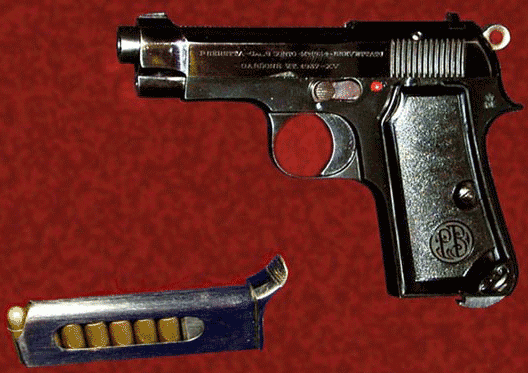 |
|
Beretta Web - Model 1934 e 1935 splendida arma militare d'altri tempi
Beretta 92 History
| Beretta 92 DeLuxe
| Beretta Billenium
| Beretta 90-TWO
| Beretta 92
| Beretta 92S
| Beretta 92SB
Beretta 93R
| Beretta Target
| Beretta 92 Combat
| Beretta 92 .22LR Kit
| Beretta 92A1
| Beretta Vertec Steel
| Beretta 92 Gost
Beretta 418
| Beretta 1931-1934
| Beretta 1934
| Beretta 70 series
| Beretta 90
| Beretta 950
| Beretta 9000
Beretta 80 Series
| Beretta 86
| Beretta 89
| Beretta U22
| Beretta 8000
| Beretta 51
| Beretta Olympic

